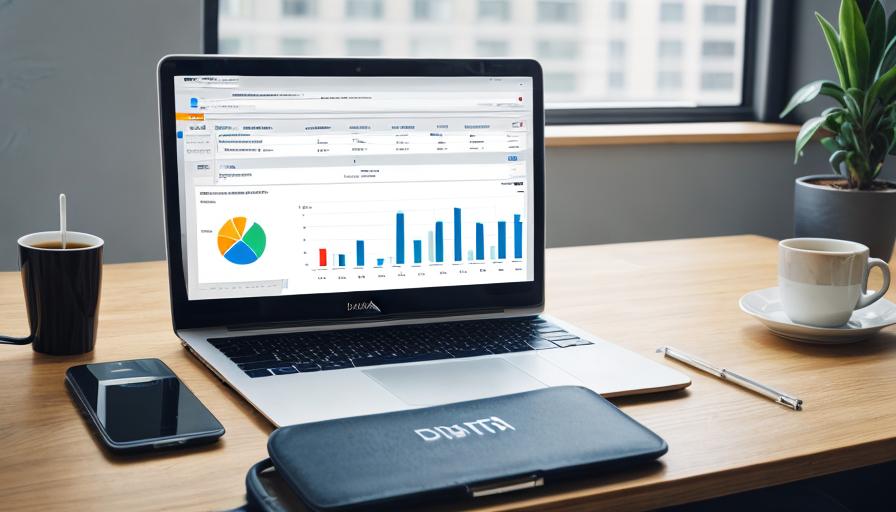data analytics role description
Introduction:
In the era of big data, the term data analytics has gained immense prominence. data analytics role description revolves around the systematic analysis of large datasets to unveil patterns, trends, and insights. As businesses and organizations strive to make data-driven decisions, the demand for skilled data analysts has soared.
data analytics role description:
In today’s rapidly evolving digital landscape, the role of a Data Analyst has become increasingly crucial. data analytics role description involves a comprehensive understanding of data and the ability to extract valuable insights for informed decision-making. This article aims to delve into the intricacies of the data analytics field, providing a detailed job description, required skills, tools used, qualifications, salary insights, and guidance on how to kickstart a career in this dynamic domain.

Read this article to learn about current technology in computer science
1- What Is Data Analysis?
At its core, data analysis is the process of inspecting, cleaning, transforming, and modeling data to discover meaningful information, draw conclusions, and support decision-making. In a world inundated with information, data analysis acts as a guiding light, helping businesses navigate through the complexities of data to gain actionable insights.
2- What Does a Data Analyst Do?
A data analyst plays a pivotal role in deciphering the story hidden within the data. From collecting and processing data to presenting findings and recommending strategies, their responsibilities are diverse. The data analytics role description involves transforming raw data into understandable information that aids executives and stakeholders in making informed choices.
3- Data Analyst Job Description: Roles and Responsibilities
-
In-Depth Exploration of Job Roles
The entry-level data analyst job description involves diverse roles, encompassing data cleaning, statistical analysis, and data visualization. Collaboration with various departments is key, understanding organizational needs, and formulating strategies for effective data collection.
-
Real-world Applications
In real-world scenarios, data analysts contribute to enhancing operational efficiency, identifying market trends, and improving overall business performance. The data analytics role description extends to solving complex problems by analyzing data and providing actionable recommendations.
4- Essential Data Analyst Skills
-
Technical Proficiency
To excel in the field, mastering programming languages like Python is essential for data analysts. Furthermore, honing data analyst skills in using visualization tools like Tableau and Power BI is vital for conveying insights effectively.
-
Analytical and Critical Thinking Skills
Analytical skills are at the heart of a data analyst’s role. The ability to interpret data, identify patterns, and draw meaningful conclusions is paramount. Critical thinking helps in approaching problems strategically and making informed decisions.
5- What Tools Do Data Analysts Use?
-
Overview of Commonly Used Tools
Data analysts employ various tools to analyze and interpret data. From Excel for basic analysis to advanced tools like SQL for database querying, the data analytics role description involves familiarity with a range of tools.
-
Importance of Technology in Data Analysis
Advancements in technology have significantly influenced the field of data analytics. Data analysts leverage cutting-edge tools and technologies to streamline processes and extract insights more efficiently.
6- Data Analyst Qualifications: What Does it Take.
-
Educational Background
While a bachelor’s degree in a related field is a common starting point, advanced degrees in data science or analytics can provide a competitive edge. Continuous learning and staying updated with industry trends are essential in the dynamic field of data analytics.
-
Certifications and Additional Qualifications
Obtaining relevant certifications, such as Certified Analytics Professional (CAP) or Microsoft Certified: Data Analyst Associate, enhances credibility and demonstrates expertise in specific areas of data analytics.
7- Types of Data Analysts
-
Specializations within Data Analytics
Data analysts can specialize in various areas, including business intelligence, healthcare analytics, or financial analysis. Each specialization requires a unique skill set and domain-specific knowledge.
-
Varied Career Paths
The diverse nature of data analytics allows professionals to explore different career paths. Whether in academia, corporate settings, or entrepreneurial ventures, the data analytics role description provides opportunities for a versatile career.
8- Data Analyst Salary: How Much Does a Data Analyst Make?
-
Factors Influencing Salary
Several factors influence a data analyst’s salary, including experience, education, location, and industry. As the demand for skilled data analysts continues to rise, competitive salaries are offered to attract top talent.
-
Industry Standards and Variances
Different industries may have varying salary standards for data analysts. Understanding industry norms is crucial for negotiating a fair and competitive salary.
9- Top Companies Hiring Data Analysts
-
Overview of Leading Companies
Major players across industries, including technology, finance, and healthcare, are actively seeking skilled data analysts. Companies like Google, Amazon, and Microsoft consistently rank among the top employers in the data analytics domain.
-
Job Opportunities in Different Sectors
Data analysts have a wide array of job opportunities in sectors such as e-commerce, healthcare, finance, and more. Understanding the industry landscape helps aspiring data analysts align their career goals with the right sector.
10- Choose the Right Program
-
Educational and Training Programs
Selecting the right educational program is a crucial step in preparing for a career in data analytics. Universities, online platforms, and specialized training programs offer diverse options tailored to individual preferences and goals.
-
Tailoring Education to Career Goals
Considering the varied specializations within data analytics, tailoring education to align with specific career goals ensures a more focused and impactful learning experience.
11- Get Started to Become a Data Analyst Today!
-
Steps to Kickstart a Career in Data Analytics
Embarking on a career in data analytics requires a strategic approach. From acquiring the necessary skills to building a strong portfolio, taking the right steps paves the way for a successful journey in this dynamic field.
-
Building a Strong Foundation
Building a strong foundation involves continuous learning, staying updated with industry trends, and gaining practical experience through projects and internships. Networking with professionals in the field can also provide valuable insights and opportunities.
Conclusion:
In conclusion, delving into the data analytics role description reveals a dynamic profession that goes beyond mere data interpretation. As businesses increasingly rely on data-driven insights, the demand for skilled data analysts continues to rise. Aspiring professionals should focus on acquiring the essential skills, staying abreast of technological advancements, and tailoring their education to align with specific career goals. The multifaceted nature of data analytics provides diverse career paths and opportunities across various industries. With continuous learning and a strategic approach, individuals can embark on a rewarding journey in the ever-evolving world of data analytics, contributing significantly to informed decision-making processes and shaping the future of businesses.
FAQ:
1- What are the roles and responsibilities of a data analyst?
A data analyst’s roles encompass tasks like data cleaning, statistical analysis, and data visualization. Collaboration with different departments is crucial to understand organizational needs and devise strategies for efficient data collection.
2- What is the role of data in analytics?
Data plays a pivotal role in analytics by providing the raw material for analysis. It serves as the foundation for uncovering patterns, trends, and insights that inform decision-making processes across various industries.
3- What is a data analytics job about?
A data analytics job involves systematically analyzing large datasets to extract meaningful information. Data analysts translate raw data into actionable insights, aiding businesses in making informed decisions and strategizing for the future.
4- What is a brief description of data analytics?
Data analytics is the process of examining, cleaning, transforming, and modeling data to discover valuable insights. It involves interpreting complex information to support decision-making, enhance operational efficiency, and identify trends in diverse fields.






